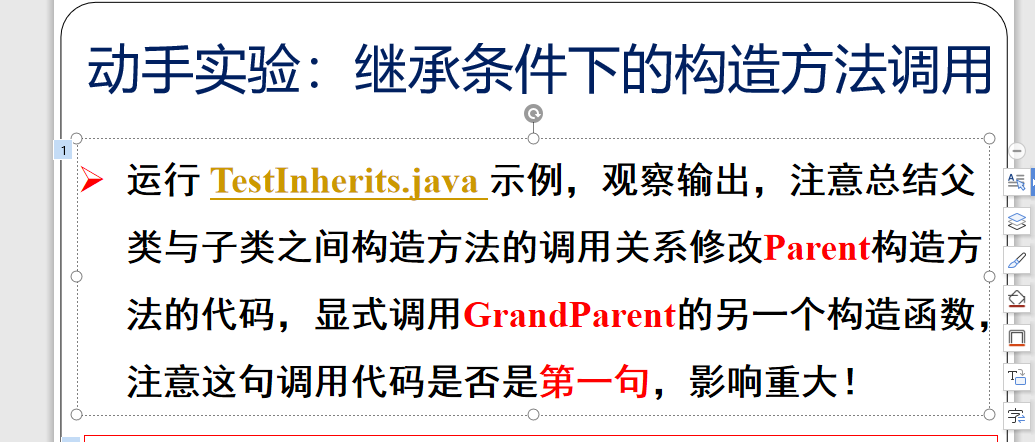
第一次结果:
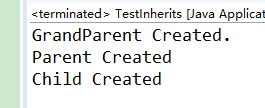 子类在创建是,先调用父类的构造函数,然后再调用自身的构造函数。
子类在创建是,先调用父类的构造函数,然后再调用自身的构造函数。
第二次结果:
 如果显示调用父类构造函数(super),则必须放在子类构造函数第一行,否则会报错
如果显示调用父类构造函数(super),则必须放在子类构造函数第一行,否则会报错
完整代码:
package com.javaclass4; class Grandparent { public Grandparent() { System.out.println("GrandParent Created."); } public Grandparent(String string) { System.out.println("GrandParent Created.String:" + string); } } class Parent extends Grandparent { public Parent() { //super("Hello.Grandparent."); System.out.println("Parent Created"); //super("Hello.Grandparent."); } } class Child extends Parent { public Child() { System.out.println("Child Created"); } } public class TestInherits { public static void main(String args[]) { Child c = new Child(); } }
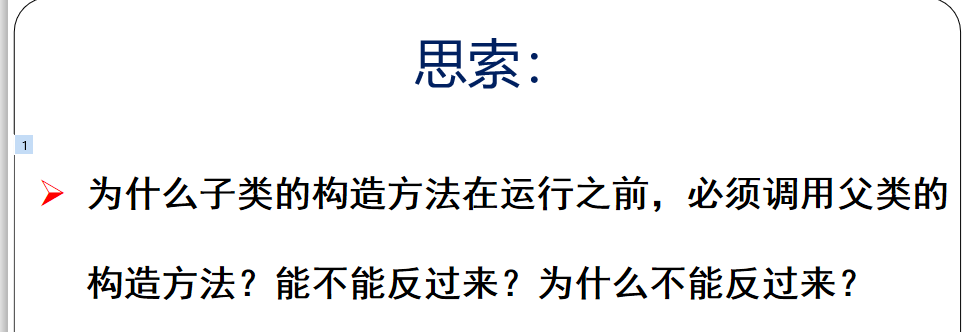
答案肯定是不能的,因为构造函数是对类进行初始化的,子类继承了父类数据,所以必须要父类对数据进行初始化,所以必须先调用父类的构造函数,然后再调用子类的构造函数。
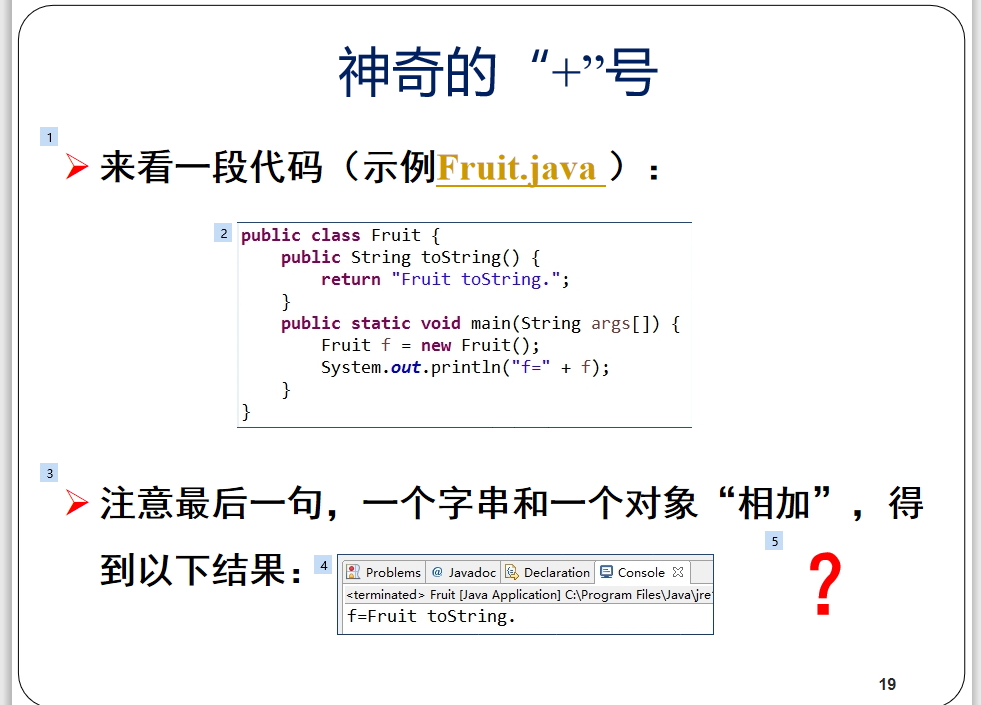
原因是在“+”运算中,当任何一个对象与一个String对象连接时,会隐式地调用其toString()方法,默认情况下,此方法返回“类名 @ + hashCode”。为了返回有意义的信息,子类可以重写toString()方法
这是重写的toString()方法
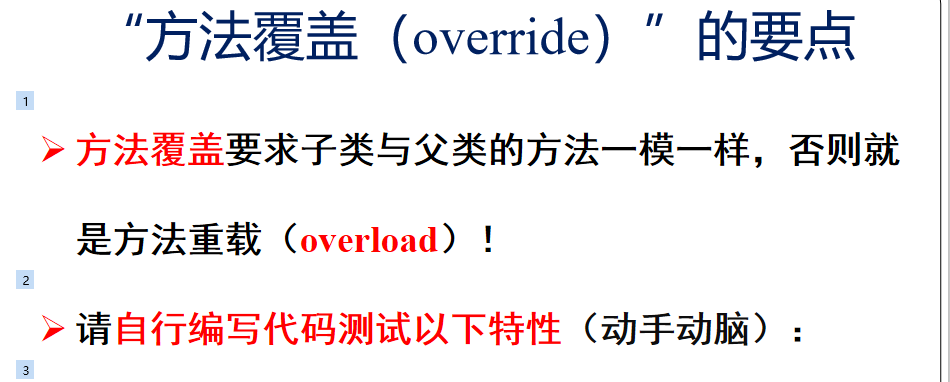
代码:
 输出结果:
输出结果:
可以用super关键字调用父类的方法。 输出结果:
Java方法的覆盖原则:
(1)覆盖方法的允许访问范围不能小于原方法。
(2)覆盖方法所抛出的异常不能比原方法更多。
(3)声明为final方法不允许覆盖。 例如,Object的getClass()方法不能覆盖。
(4)不能覆盖静态方法。